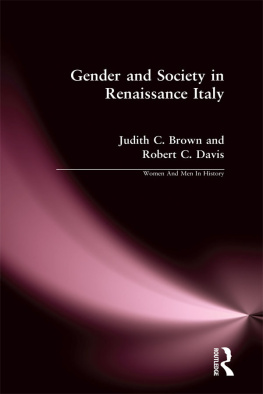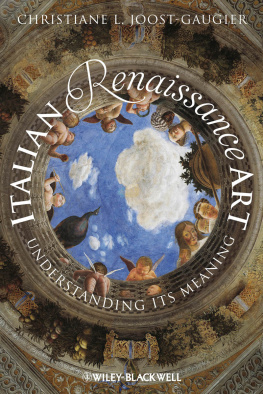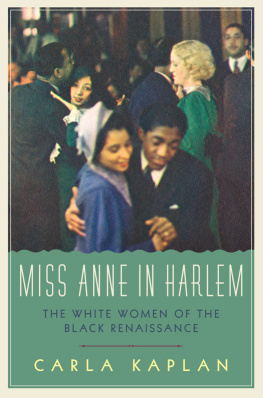BINDING PASSIONS

BINDING PASSIONS

TALES OF MAGIC, MARRIAGE, AND POWER AT THE END OF THE RENAISSANCE
Guido Ruggiero
New York Oxford
OXFORD UNIVERSITY PRESS
1993
Oxford University Press
Oxford New York Toronto
Delhi Bombay Calcutta Madras Karachi
Kuala Lumpur Singapore Hong Kong Tokyo
Nairobi Dar es Salaam Cape Town
Melbourne Auckland Madrid
and associated companies in
Berlin Ibadan
Copyright 1993 by Oxford University Press, Inc.
Published by Oxford University Press, Inc.,
198 Madison Avenue, New York, New York 10016-4314
Oxford is a registered trademark of Oxford University Press
All rights reserved. No part of this publication may be reproduced,
stored in a retrieval system, or transmitted, in any form or by any means,
electronic, mechanical, photocopying, recording, or otherwise,
without the prior permission of Oxford University Press.
Library of Congress Cataloging-in-Publication Data
Ruggiero, Guido, 1944
Binding passions : tales of magic, marriage, and power at the end
of the Renaissance / Guido Ruggiero,
p. cm. Includes bibliographical references and index.
ISBN 0195079302ISBN 0195083202 (pbk.)
1. Sex customsItalyVeniceHistory.
2. Sexual ethicsItalyVeniceHistory.
3. MarriageItalyVeniceHistory.
4. RenaissanceItalyVenice. I. Title.
HQ18.I8R83 1993
306 .0945 31dc20 9224005
3 5 7 9 8 6 4 2
Printed in the United States of America
on acid-free paper
For all those who have shown the way
and especially
Natalie Z. Davis and Gaetano Cozzi
Slowly as the ages passed living among signs had led to seeing as signs the infinity of things that in the beginning were merely there without marking anything but their own existence. Now they had become transformed into the signs of themselves and added to the series of signs intentionally made by those who wanted to create a sign....
ITALO CALVINO, Le Cosmicomiche, p. 50.
ACKNOWLEDGMENTS
Writing a book, much like making a long journey, is an adventure in which, if one is fortunate, one may encounter interesting and fine people who help show the way. Great writers like Dante may have completed their literary peregrinations with only one or two guides, but happily, much less accomplished writers on much more humble journeys often need more guidance than even a Virgil or a Beatrice could provide. That is certainly the case in the journey that produced this book; I have enjoyed an embarrassment of riches when it comes to help along the way.
Perhaps most important have been the people who have made research in Venice and the Veneto so rich and rewarding. The staff of the Venetian Archivio di Stato has been particularly helpful in good times and difficult ones, especially Michela Dal Borgo, Sandra Sambo, and the hard-working Uscieri there. The staff of the Archivio della Curia Vescovile of Feltre was also most accommodating and welcoming, as were those of the many other libraries and institutes where I have worked in Italy over the years. Special thanks are in order for the many friends in Treviso who made my time there enjoyable, rewarding, and at times even possible, especially Laura and Delma Giannetti.
Colleagues, students, and friends in Europe and the United States also contributed a great deal to this journey. Again, a list can only begin to suggest those who have helped, but especially significant have been Bob and Mary Jo Nye, Jim and Joanne Farr, Phil and Gillian Tabor, Jonathan and Beth Glixon, Edward Muir and Linda Carroll, Judy Brown, Gene Brucker, Gigi Corazzol, Gaetano Cozzi, Natalie Z. Davis, Bob Davis, Joanne Ferraro, Mary Gibson, Felix Gilbert, Ronna Goffen, Paul Grendler, Michael Knapton, Patricia Labalme, Mary Lindemann, Richard Mackenney, John Martin, Lauro Martines, Lori Nussdorfer, Paolo Preto, Brian Pullan, Dennis Romano, Margaret Rosenthal, Kenneth Setton, and Anne Jacobson Schutte. Chapters of this book were presented in early form at a conference on Love, Sexuality, and Marriage at the National Humanities Center in 1987; at a symposium on Sex, Love, and Marriage as part of the Appleby Memorial Lecture series at San Diego State University in 1987; at the Third International Association for the History of Crime and Criminal Justice conference sponsored by the Maison des Sciences de l'Homme in Paris in 1988; and as public lectures at a number of universities in the United States, Italy, and England. At each stop on this grand tour, people offered suggestions and asked questions that have contributed to this book, especially Elena Fasano Guarini, Sarah Hanley, David Halperin, Daniela Lombardi, Robert Muchembled, Gherardo Ortalli, Lawrence Stone, James Turner, and Stephen Wilson.
While working on this book, I have received much appreciated support from my colleagues at Syracuse University in Florence, the University of Tennessee, the University of Cincinnati, and the University of Connecticutparticularly the last, where virtually every member of the department has at one time or another aided significantly in this project. The staffs at all four institutions have been unusually helpful, providing a consistently warm and supportive environment even in the worst times of economic hardship. My students have also done much to enrich this project and this journey, especially Michelle Laughran, Lee Penyak, Susanne De Lucca, and Meg and Mary Gallucci. Much of the writing was done in the idyllic setting of the Institute for Advanced Study at Princeton and Harvard's Villa I Tatti. There too, fine colleagues and excellent staffs made the supposed labor of this book a special pleasure and privilege. I Tatti is set in the hills above Florence where Boccaccio's band of young people retired from the troubling world of 1348 to tell their tales of the Decameron, and there were many days there in 1990-91, surrounded by minds always young and lively (not just of the fellows but also of the staff), when I felt that they were really writing the tales of this book. Much the same could be said of Princeton, the Institute, its fellows, and its staff. Crucial for research time in Italy and writing at the Institute and I Tatti were a series of much appreciated grants provided by the John Simon Guggenheim Foundation, the National Endowment for the Humanities, and the Research Councils of the University of Connecticut and the University of Cincinnati.
Finally, I owe a very special debt of gratitude to those who have read this manuscript with such thoughtful care and who have provided a host of useful suggestions for improving it. Jim Farr, John Martin, Lauro Martines, Edward Muir, and Kristin Ruggiero have each read it all, and some have read it in more than one draft. The book and the journey were much improved by their suggestions, help, and friendship. Kris Ruggiero especially has made this journey possible and special. Thanks to all these fine people and the many others not named here, this book is a better one, and the journey involved in writing it has been a rich and rewarding one.

For Bakhtin, in his beautiful study of Rabelais, the carnival is always a primary source of liberation, destruction and renewal, but the scope it is allowed changes in different periods. Before the existence of classes and the state, the comic realm was equal to the serious; with slave and feudal societies, including that of the sixteenth century, the carnival became a second life, a second reality for the people, separated from power and the state but still public and perennial; in bourgeois society (and alas, one feels, in Bakhtins socialist society as well) it is reduced to home and the holiday.














